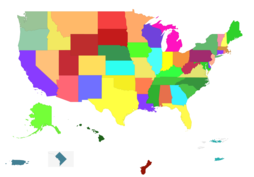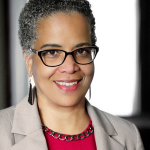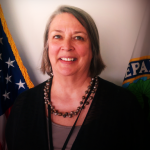
This is a repost of a Disability.Gov Blog post by Carmen Sánchez, Education Program Specialist, Office of Special Education Programs at the U.S. Department of Education and Debra Jennings, Executive Co-Director, SPAN.
A new school year is a new opportunity to build the relationships that strengthen the foundations of support that are so important for our students with disabilities. As one parent engagement professional stated, “Parents and schools should reach out and open lines of communication in a time of peace before that first poor grade or behavior issue. Find out how people would like to be addressed and their preferred method of communication.”
But how does a parent start the conversation in a way that is focused on strengths just as much as need? A Positive Student Profile is a great way to introduce a child to teachers at the beginning of the school year. Here’s an example of one way to introduce the profile, which can be customized to fit your student:
Dear Mr. Rogers,
Alex and I are excited about this new school year! I am writing to share some things I believe will help make this successful year for him. You likely received Alex’s individualized education program and are thinking about how to implement the supports and accommodations listed in his IEP. But while the IEP does a good job of describing Alex’s learning and needs, it doesn’t fully describe him or who he is. I am including a profile (http://www.parentcenterhub.org/repository/pbp-student-profile/) that Alex prepared that tells about his interests, his strengths, and what works best for him to help him learn.
Our family has high expectations for Alex, just as we have for his sister. And we know that he requires some supports and accommodations to meet these expectations. We are always looking for information about Alex’s abilities and challenges. We have come across several resources that have really helped us and Alex’s teachers work together to help Alex learn. Here are some that might be of interest…
Want more tips on how to make the best of the new school year? The Parent Training and Information Center (PTI) or Community Parent Resource Center (CPRC) in an area or state is an excellent source of resources, materials, support and connections for families of children with disabilities. PTIs and CPRCs can help families understand student’s education rights under the Individuals with Disabilities Education Act (IDEA), Every Student Succeeds Act (ESSA), Americans with Disabilities Act (ADA) and Section 504 of the Rehabilitation Act. They can also help families understand more about their child’s disability and needs as well as promising practices in education. In addition, they can help families learn how to effectively communicate and work with school personnel and other providers in meeting their child’s needs. PTIs and CPRCs provide information on the phone, through workshops (in-person, on-line, live and pre-recorded) and through a treasure trove of materials and resources that are shared on their websites and social media. They may also provide these materials in other languages based upon the needs of families in the community.
Centers are run by well-trained and knowledgeable staff, most of whom have children with disabilities themselves. PTIs and CPRCs answer families’ questions with practical advice or refer families to other organizations in the families’ community that can help. Most centers also extend their training and information services to professionals who work with children with disabilities and their families. And through the PTIs and CPRCs, families can also connect with other families and professionals for support and problem solving.
Many families can feel overwhelmed dealing with multiple issues raised by their child’s needs. PTIs and CPRCs help families sort through the issues and provide strategies to help parents and professionals address them together.
In addition to the PTIs and CPRCs, the U.S. Department of Education’s (ED) Office of Special Education and Rehabilitative Services funds a network of technical assistance and dissemination centers that can connect parents and professionals to best practices in special education and early intervention services. Some of these centers include:
And, check out ED’s Early Learning site full of information.
Finally, the new school year is an excellent time for students, no matter what their age, to learn how to advocate for themselves. Whether it’s focusing on using a communication device to indicate what they want or need, or leading their own individualized education plans, parents and teachers can work together to include self-advocacy skills in all that they do with students with disabilities. One good resource is the RAISE Center, Resources for Access, Independence, Self-Advocacy and Employment, also funded by the Department of Education, and the National Resource Center for Supported Decision-Making, funded by the U.S. Department of Health and Human Services.
Here’s to a positive, productive new school year for all students!
About the Guest Bloggers

Carmen Sánchez
Carmen Sánchez is an Education Program Specialist in the Office of Special Education Programs at the U.S. Department of Education. She is the program lead for the Parent Center Program, which consists of grants for Parent Training and Information (PTIs) and Community Parent Resource Centers (CPRCs) to train, inform, and engage families of children with disabilities throughout the country; and a national, six regional, and two topical technical assistance centers that support the PTIs and CPRCs. She is also the mother of a young adult with disabilities.

Debra Jennings
Debra Jennings is the Executive Co-Director of SPAN, a parent-led non-profit organization that empowers families as advocates and partners in improving education, health, and mental health outcomes for infants, toddlers, children and youth. Debra leads SPAN’s parent leadership development activities and also directs SPAN’s national technical assistance centers that are funded by the U.S. Department of Education to provide information, resources and support for the almost 90 Parent Training and Information Centers and Community Parent Resource Centers serving families of children with disabilities and also youth/young adults with disabilities across the U.S. and its territories.





